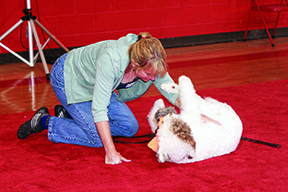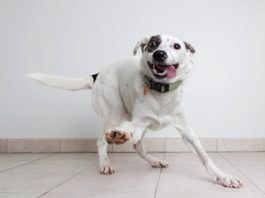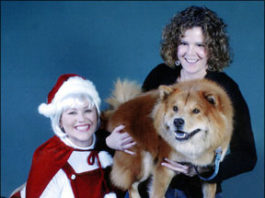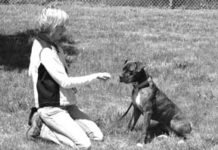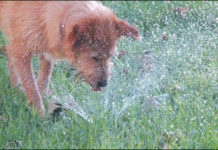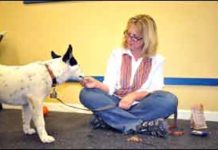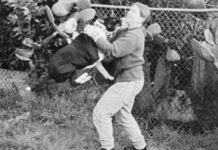Positive Methods for Obedience Training
How to teach your dog to look to you (literally!) for direction. Look is a combination behavior. It is more than the “Leave it” or “Off.” It is more than the ever-popular “watch me.” It involves the dog breaking eye contact with the arousing object, person, or animal (whatever triggers the dog’s manic behavior); turning his head away from that trigger; making eye contact with you; and holding that eye contact until you give a release signal.
Does Your Female Dog Hump?
Usually humping is associated with male dogs, but humping is also very common amongst female dogs. Some girls will hump toys or other objects, some hump air, others hump other dogs or even people. To learn more about humping, why girls do it, and how to keep your female dog from humping, we talk with Certified Professional Dog Trainer and Chair of The Association of Professional Dog Trainers Nick Hof, CPDT-KA, CBCC-KA, KPA-CTP, CSAT, to answer some of your most commonly asked questions about female dogs and humping.
Dog Training Using Rewards
What could be more convenient? Many trainers are recommending Skippy’s “Squeez’ It” as a convenient training tool because it can be used to dispense a peanut butter treat right into the mouth of a dog who deserves a reward. The dog loves it, and his handler’s hands stay clean and dry. No wonder this product is getting rave reviews from trainers.
A Bond-Based Approach to Dog Training
There is a lot of food for thought in this book. There is much that I find intriguing and would like to pursue, and also much that I disagree with. Arnold criticizes modern trainers for their focus on operant conditioning without acknowledging the great interest force-free trainers have already demonstrated in regard to the concepts of empowerment, choice, and cognition in their training programs. She insists that dogs really are eager to please" their humans an idea I have long argued against. She hasn't convinced me on that topic
Install an Off-Switch on Playtime
you are in for a lot more of the same."
Dog Harness vs Collar: Which is Better?
Dog harnesses vs collars - which is safer? There are many types of collars and harnesses on the market, and some serve specific purposes.
Striving to Stay Positive (in Dog Training)
Did you know there are still Nazis" fighting a war? Supposedly
Been There, Doing That: Advice from Pro Dog Trainers
I think it’s really important for dog trainers to get a lot of experience being a student before becoming a teacher. Take as many classes as you can, in numerous disciplines, with your own dog. You’ll learn how different classes are structured and what you like and don’t like about them. When not actively working with your own dog, observe the other students and see how the instructor works with a variety of dogs and people.
Positive Dog Training for Hunting Dogs
Depending on who you talk to, “hunting dog” means very different things. The only thing in common may very well be that the human end of the leash historically toted a gun in pursuit of some type of “game.” The game in question was not after-dinner parlor entertainment, but the entree on your dinner table. That might be pheasant, duck, or squirrel. Through hundreds of years, the real-life pursuit of food for one’s family has morphed into a competitive sport for people who rely upon Safeway to meet their nutritional needs.
A Progress Report on Positive Dog Training and Our New Dog Otto
and calls him to us for a pet or a treat. He's learned that coming straight to us is consistently rewarding
Touch/Restraint Desensitization Protocol
Touch dog’s shoulder with one hand, feed treat with other hand, remove both hands. Repeat multiple times until touch to the shoulder elicits an automatic look for the other hand to arrive with treat. Move touch process to various other parts of dog’s head and body until a touch anywhere on the dog elicits an auto-look for the delivery of a treat. Pay extra attention to any body part where your touch seems to elicit a more intense response from the dog.
Causes of Reactive Dog Behavior and How to Train A Reactive Dog
“Reactive” is a term gaining popularity in dog training circles – but what is it, exactly? In her book Clinical Behavioral Medicine for Small Animals, Applied Animal Behaviorist Karen Overall, M.A., V.M.D., Ph.D., uses the term to describe animals who respond to normal stimuli with an abnormal (higher-than-normal) level of intensity. Take a deep breath and relax. We have positive training solutions for dogs who "go off" or "lose it" in certain circumstances.


